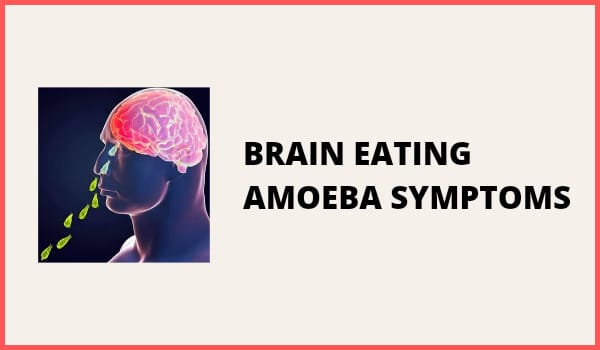Brain Eating Amoeba Symptoms, Treatment, Survivor, Total cases
Brain Eating Amoeba Symptoms, Treatment, Survivor, Total cases can be checked from this page now. Amoebas are examples of unicellular organisms. The amoeba species called the “Brain Eating Amoeba” was discovered in 1965. Its scientific name is Naegleria Fowleri. They live in warm bodies of freshwater or waterways that have not been treated and are polluted. When it enters the human body, it produces a rare infection in the brain that can be fatal, as well as inflammation in the brain, and it gradually “eats” the brain tissue, which leads to the tissue’s destruction. In this post, we will answer about Brain Eating Amoeba Symptoms, Treatment, Survivors, and Total cases.
Brain Eating Amoeba
There are numerous other species of Naegleria, but the only one that causes PAM is the fowleri species. This amoeba originated in the United States, even though it got discovered for the first time in Australia. The size of N. fowleri is 8 micrometers to 15 micrometers, depending on the stage of its life cycle and the habitat. In contrast, the width of human hair is between 40 and 50 micrometers.
Naegleria, like other amoebas, reproduces via the process of cell division. Amoebas transform into dormant cysts when the environmental circumstances are not favorable. In favorable conditions, the cysts develop into trophozoites, the Naegleria Fowleri form that feeds on other organisms.
Brain Eating Amoeba Symptoms
The symptoms of Brain Eating Amoeba appear suddenly and are rather severe initially. These signs and symptoms include the following:
- headache
- fever
- stiff neck
- loss of appetite
- vomiting
- changed mental state
- seizures
- coma
Brain Eating Amoeba Treatment
Antifungal amphotericin B is the therapy for PAM, also known as infection with a Brain Eating Amoeba. Some survivors in North America received treatment with medications that included the pharmaceuticals amphotericin B, rifampin, fluconazole, and miltefosine.
Miltefosine can treat the parasite condition called leishmaniasis transmitted by sandflies. Early identification and treatment with the necessary medications and cooling the body to a temperature lower than usual as a therapy for brain swelling had the best outcomes (in two children who recovered entirely).
Brain Eating Amoeba Total cases
According to South Korean health officials, the “Brain Eating Amoeba,” Naegleria fowleri, has been the subject of its first infection case report. The Naegleria fowleri infection, which affects human brains, was found in a Korean person who passed away after returning from Thailand, according to the KDCA. After spending four months in Southeast Asia, the 50-year-old man returned to Korea on December 10 and later got hospitalized. According to the Yonhap news agency, he passed away on Tuesday.
The illness, found in the United States in 1937, has now been recognized to cause its first infection. The amoeba Naegleria fowleri lives in warm freshwater ponds, lakes, rivers, canals, and lakes all around the globe. When an amoeba enters the nose, it goes to the brain, which consumes brain tissue. Despite the limited likelihood of human-to-human transmission of Naegleria fowleri, the KDCA urged locals to avoid swimming in the regions where the illness has spread. As of 2018, 381 Naegleria fowleri cases have been documented worldwide, including those in the US, India, and Thailand.
- CoWIN Self Registration
- CoWIN Online Slot Booking
- CoWIN Certificate Correct: Mobile Number
- How to Register for CoWIN
- Vaccination Certificate in India
- How to Book Precaution Dose?
Is the Naegleria Fowleri Common?
Even though N. fowleri amoebas are widespread, and the conditions they create in the brain are rare. The illness caused by N. fowleri is referred to as Brain Eating Amoeba. This infection is rare. However, some variants are still unknown. Researchers in Virginia discovered five unidentified variants of PAM after they reviewed more than sixteen thousand autopsy records of individuals who had died from meningitis.
According to studies, a significant percentage of the population can have antibodies against N. fowleri. It points to the possibility that they got infected with the amoeba but that their immune systems were able to clear them out. It is not apparent if N. fowleri is an uncommon infection that always produces PAM and is nearly always deadly or whether it is a more frequent virus that only occasionally causes PAM. Either way, N. fowleri is a lethal illness. Researchers from the Centers for Disease CDC conducted a study in 2009 in which they hypothesized that the frequent discovery of antibodies to the amoeba in humans and the frequent discovery of N. fowleri in the waters of the United States indicate “that exposure to the amoeba more common than the incidence of PAM suggests.”
If you have questions concerning this post, you can ask in the comment section.
Click here to go back to Home.

